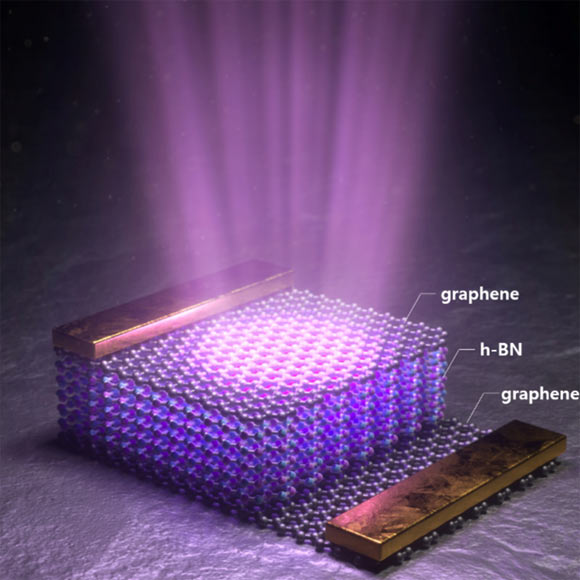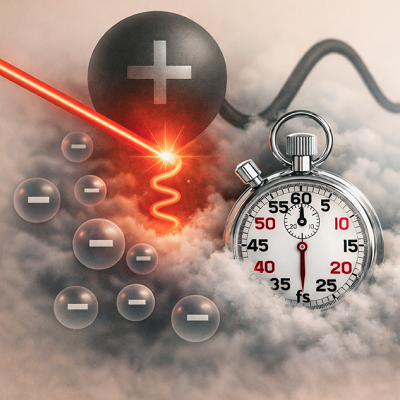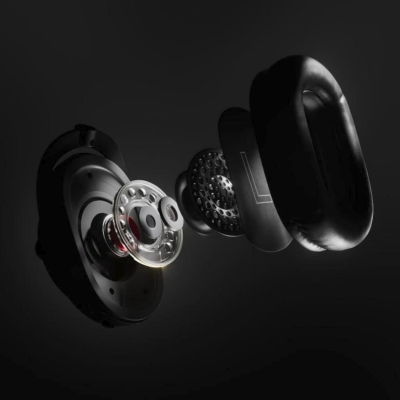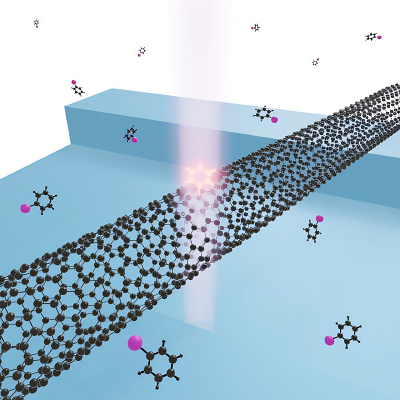“Unlike visible light, ultraviolet (UV) light can destroy or alter the form of a material,” said senior author Professor Jonghwan Kim and colleagues.

Hexagonal boron nitride-based deep-ultraviolet LED.
“Among UV lights, the near-UV light has high penetration depth and can cause diseases when the skin is exposed to it.”
“However, DUV light (200-280 nm) has extremely low skin penetrability and is anticipated to be safely used,” they added.
“For this reason, research to develop DUV LEDs has been active, mainly using aluminum gallium nitride (AlxGa1-xN).”
“However, this material has a fundamental limitation in that its electroluminescence rapidly deteriorates as the wavelength becomes shorter and fabricating LEDs that can be used in the DUV frequencies remains a challenge.”
For their research, Professor Kim and co-authors used a van der Waals semiconductor called hexagonal boron nitride.
Unlike AlxGa1-xN, this transparent layered material emits luminescence at DUV frequencies.
“However, it has been difficult to inject electrons and holes due to its large bandgap, rendering it difficult to make into an LED,” the authors said.
“To do this, we focused on injecting electrons and holes to the hexagonal boron nitride band edges by applying a strong voltage to the hexagonal boron nitride nanofilm inducing the tunneling mechanism.”
“With this, we successfully fabricated an LED device based on a van der Waals heterostructure stacked with graphene, hexagonal boron nitride, and graphene.”
Using DUV micro-spectroscopy, the team then confirmed that the newly fabricated device emits strong UV light.
“The development of a new high-efficiency LED material in a new frequency can be the starting point for pioneering groundbreaking optical device applications that have never been seen before,” Professor Kim said.
“It is significant that this study presented the first demonstration of a deep-ultraviolet LED based on hexagonal boron nitride.”
“Compared to the conventional AlxGa1-xN material, the new material has significantly higher efficiency of luminescence and enables miniaturization.”
“It is anticipated to be highly applicable in viral and bacterial sterilization systems, semiconductor device manufacturing processes, and short-range wireless communication in the future.”
Read the original article on Sci-News.







